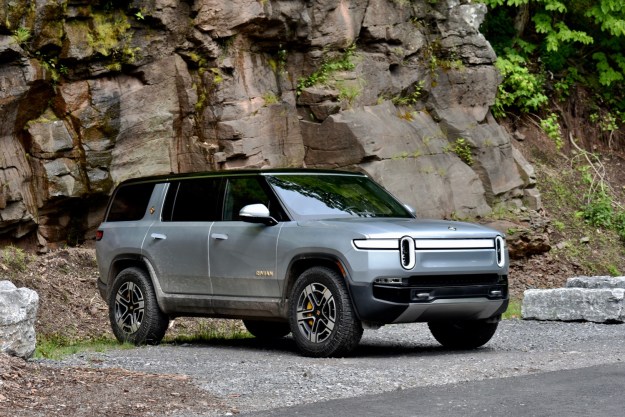Of all the cars I saw at CES 2020, I was most impressed by the Lincoln MKZ I rode in — and I didn’t even get to touch the steering wheel. Matter of fact, I didn’t have to: The car itself did all of the steering.
A couple of days earlier at the giant Consumer Electronics Show, Qualcomm announced a new platform for self-driving cars called Snapdragon Ride — and to showcase its powers, Qualcomm gave me a ride in an MKZ that had been tricked out with all the sensors and chips necessary to use the new platform. The platform, Snapdragon Ride, is a handful of chips and a software stack that can fit into box no bigger than your backpack and can tie all of those systems together: Radar of all ranges (and maybe even high-resolution radar), a CV2X communication system, and front and rear cameras, connected via software that knows where the car is, where it should turn, and what’s happening on the roadway ahead.
“Qualcomm has been working on autonomous driving for many years,” Anshuman Saxena, director of product management at Qualcomm Technologies, who works on the Automotive Driver Assistance Solutions team, told Digital Trends. “We’ve spent years to understand the whole problem, attack it, and put it all together into an autonomous solution.”
My self-driving test drive
The system marks a big pivot for Qualcomm, which has focused on supplying the chips — not the total package. And so to prove its platform, the chip giant took me for a spin. While at CES, I got behind the wheel of Faraday Future’s $200,000 electric sportscar but my ride in Qualcomm’s Lincoln MKZ was more exciting.

Two years ago at CES, I took a drive in a self-driving vehicle from Aptiv and ridesharing company Lyft. It was the best kind of boring: The car responded exactly as one would expect, which is to say, it didn’t stall out in the middle of the road, it didn’t try to drive into a pond or up a tree, and it felt just like any other ride I’ve been in.
That said, it was just a block or two on the Las Vegas Strip. Qualcomm took me on the highway.
In highway driving, the stakes seem higher: The cars move faster, and there’s lots more of them. Yet it’s simpler in lots of ways for a computer to master. Cars go straight, unless they’re changing lanes, and there’s very little navigation really required, beyond entry and exit ramps. So to prove its capabilities, we did all of the complex stuff: We drove on and off ramps at variable speeds, merged into a three-lane highway, navigated highway interchanges, dodged 18-wheelers.
When the handler determined it was safe, he pushed a button, signaling the car that it was OK to make the move.
It was both thrilling and boring, as my first experience had been. The car handled every situation with aplomb, slowing up and speeding down when necessary, finding appropriate space in adjacent lanes, and switching between them easily. A few things stuck out: For one, the car doesn’t simply detect the speed limit and then attempt to drive it. Instead, Qualcomm’s Ride uses the speed and activity of nearby cars, along with the speed limit to determine, an “appropriate” speed. You wouldn’t blow by a line of stopped cars simply because the speed limit allows you to, and Ride won’t either.
In addition, the car wasn’t set to switch lanes fully on its own; instead, the system displayed a map showing a green band in a nearby lane — the target zone — and alerted our human handler that it wanted to switch. When he determined that it was safe, he pushed a button, signaling the car that it was OK to make the move. This seemed like a prudent safety feature as the system is being tested out, but would be annoying for anyone actually driving a car with Ride.
Big processing power, small package

That Ride solution itself is installed in the trunk of the MKZ. A tiny box, it leaves plenty of room for actual luggage.
In other self-driving demos, the computational power required to drive a car without crashing has essentially filled the luggage compartment. Qualcomm had fitted an array of sensors onto the car, including the radar and video cameras mentioned earlier. There’s no lidar, however: Qualcomm told me such laser-based positioning systems are still prohibitively expensive, despite the multitude of companies aiming to build more affordable solid-state systems.

Buttons on the steering wheel had been repurposed to enable and disable the auto drive; no system is good enough to completely drive a car at present, and no state laws allow for such control.
But tests? That’s another story.
Qualcomm told me it has been testing the system in California for years, and has racked up thousands of autonomous miles in the process, as have the dozens of other tech companies looking to build self-driving cars of the future. Who’ll get there first? It’s anyone’s game right now.
Editors' Recommendations
- From Paris to NYC, Mobileye will bring self-driving cars to metropolises
- GM requests green light to ditch steering wheel in its self-driving cars
- Most people want to keep their cars away from full self-driving, study says


